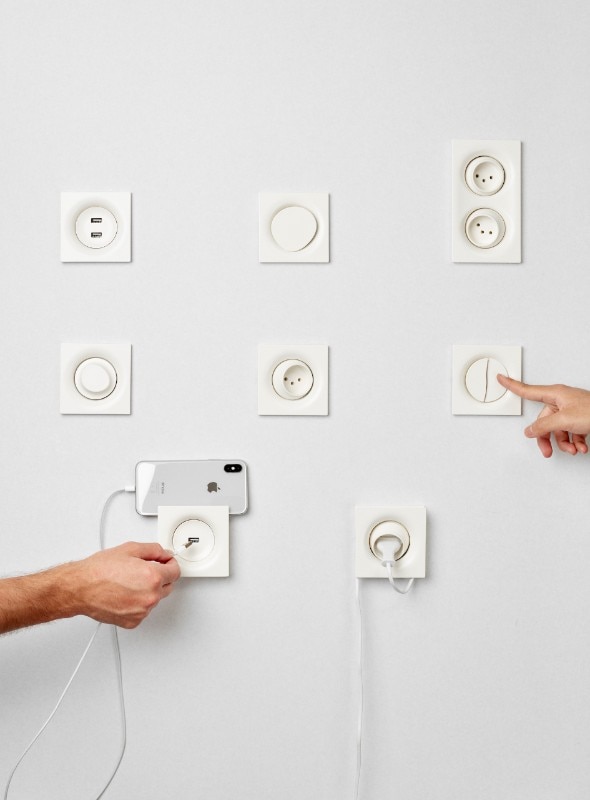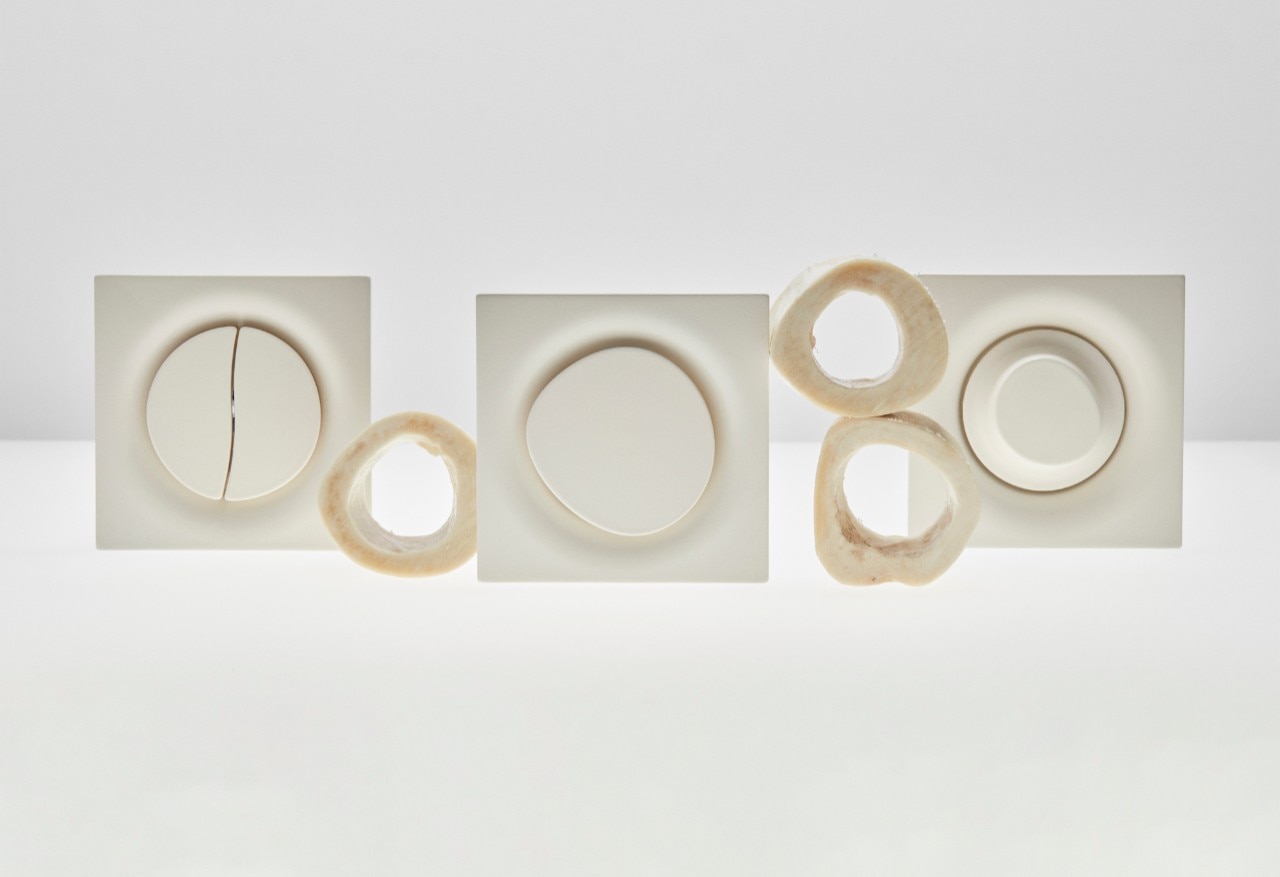Souhaïb Ghanmi, a Swiss-Tunisian designer who graduated from the École cantonale d’art de Lausanne, recently presented a collection of entirely plastic-free sockets and light switches. The main material used to make the objects is in fact waste from the animal food industry. The Elios collection is produced from the discarded bovine bones, which were first reduced to powder and then molded into new objects, exploiting the natural properties of the raw material as an electrical and thermal insulator.
“In the past, bone was the equivalent of plastic, and today plastic is one of the biggest ecological problems,” explains Ghanmi. “It is therefore obvious to me to go back to this primitive material and apply it to our daily lives.”

The idea came from the designer’s personal experience. Watching his father work with cattle, he noticed how his uncle recovered discarded bones to make knife handles. Today, in France alone, 20 million head of cattle are destined for food consumption, and the bones from this industrial production are considered as waste. Some of it is processed into various by-products such as animal feed supplements or Chinese porcelain. However, a very large part is simply collected for burning.
The experimental project could thus help break our dependence on fossil plastics, making the more than 130 billion kilograms of bone waste produced by slaughterhouses each year an available, biodegradable, and highly technical resource.

Formally, the grip is inspired by the articulation of the head of a femur, allowing the cable to be accompanied to avoid wear and tear, and the cut of long bones inspires the organic shapes of the switches. After being turned into powder, the material is mixed with a binder and cast into the desired shape in a process not unlike the one traditionally used to create switches and sockets, which are compression-molded using urea-formaldehyde. This thermosetting plastic does not melt when exposed to heat, making it suitable for use in electronics but at the same time extremely difficult and uneconomical to recycle.
In an attempt to offer a circular alternative to this process, Ghanmi is working to optimize the durability and recyclability of its bone composite so that it can be powdered and formed into new products.
















